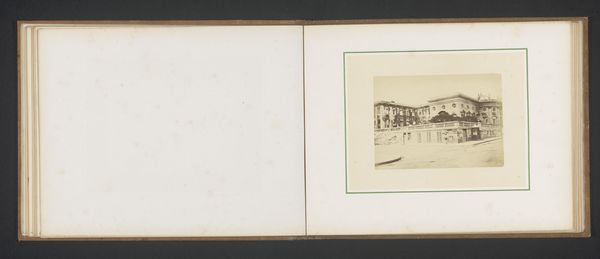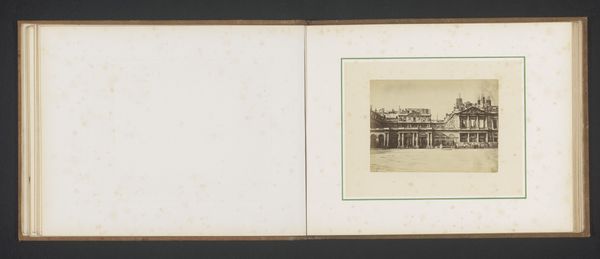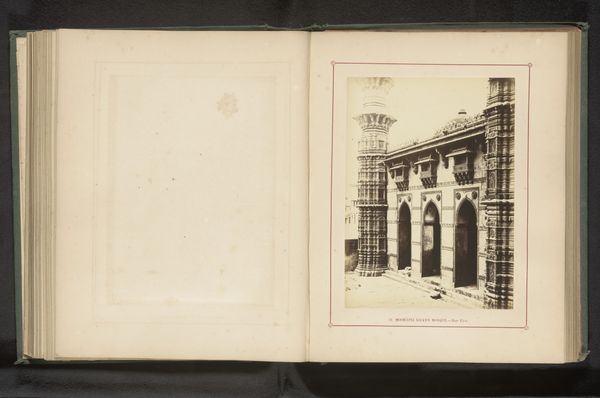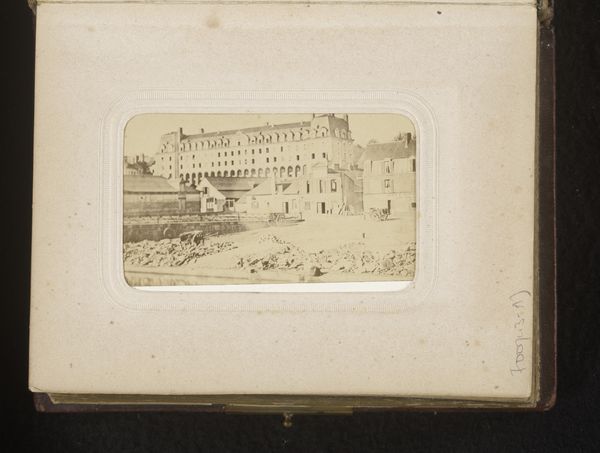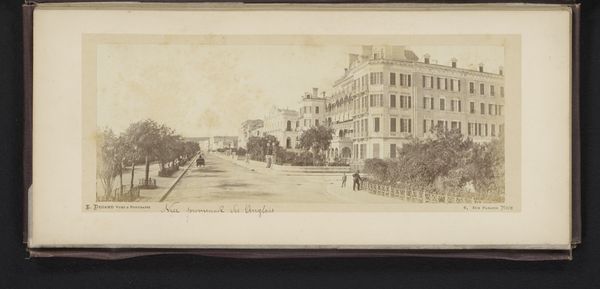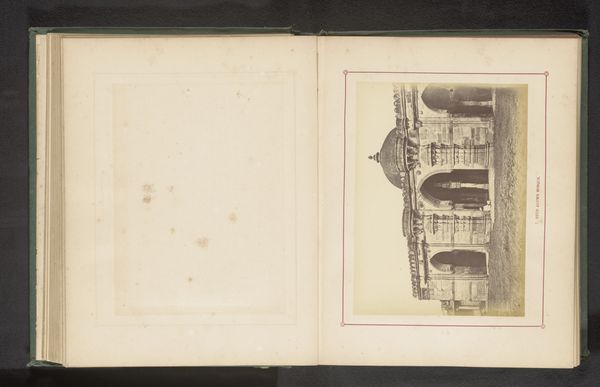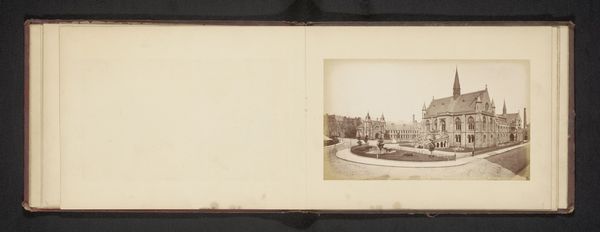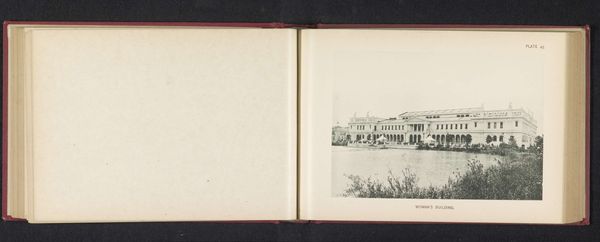
photography, albumen-print
#
photography
#
cityscape
#
albumen-print
Dimensions: height 99 mm, width 139 mm
Copyright: Rijks Museum: Open Domain
Curator: This is an albumen print from an album page depicting the "Boulevard van Saint Leonards," taken sometime before 1875 by Wm. E. Thorpe. Editor: There's something serene about this scene. The tonal range, the light… it feels still and considered. Almost painterly, despite being photography. Curator: Early photography, like this albumen print, certainly has a unique texture, one born of its materiality and the lengthy processes involved. This street, devoid of bustling crowds, highlights a tension. Who was welcome in such a space, and who was excluded by class and societal expectations of the time? Editor: That emptiness speaks to the social context. The choice to represent the street in this way feels intentional. Also, consider the physical album this print was once housed in—a luxury good made for elite consumption, containing images likely curated to present a specific version of reality. Curator: Precisely. We often romanticize these historical photographs, failing to unpack how photography as a medium contributed to power structures by reifying dominant class values through idyllic imagery. Editor: And the albumen process itself is complex, right? Egg whites are coated on paper, treated with silver nitrate… the labor! The materiality informs the final image; the subtle shifts and imperfections reveal the hand involved. Curator: Yes, the print’s warm sepia tones resulted from a labor-intensive chemical process reliant on accessible materials yet unattainable skills, mirroring the divisions the artwork itself depicts. This boulevard’s polished appearance serves to normalize standards of propriety in that era. Editor: By examining that labor, by looking at albumen prints not just as representations but as objects—constructed from materials and shaped by the people involved—we see so much more. Curator: We move beyond nostalgic gazing into active engagement, revealing how this image operates within wider social frameworks, demonstrating its power beyond the representational. Editor: It reminds me to appreciate how the method of production inevitably shapes what we are invited to consume. Curator: Agreed, recognizing its historical framework makes viewing all the richer.
Comments
No comments
Be the first to comment and join the conversation on the ultimate creative platform.

